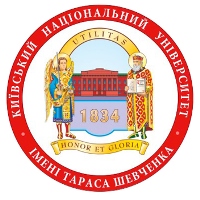ABBREVIATION AS A COMPONENT OF GLOBAL PROFESSIONAL TERMINOLOGY SYSTEM OF IT-PRODUCT DEVELOPMENT SPHERE
DOI:
https://doi.org/10.17721/folia.philologica/2022/4/4Keywords:
abbreviation, abbreviated lingual unit, professional terminology system, IT product developmentAbstract
Despite the fact that the practice of shortening words has ancient roots, modern high-tech society is characterized by the emergence of new trends in the formation of abbreviations. Processes of European integration, labour migration, as well as the expansion of opportunities for remote work of specialists in various fields in international companies, have led to the need to study the functioning of abbreviated lingual units in professional terminology systems. The above-mentioned factors testify to the relevance of the issues addressed in the article. The purpose of the research is to determine and characterize modern trends in the formation and functioning of abbreviations in the professional terminology of the field of IT product development. In the process of research, the authors have used general scientific methods of empirical research and theoretical knowledge. Content analysis and synthesis of the investigated phenomenon have made it possible to distinguish the functions that abbreviations perform in professional communication. The systematic approach has served as the basis for the study of abbreviations as a component of the terminology system. The comparative method has enabled determining the relative frequency of use of different types of abbreviations, as well as to classify them according to certain characteristics. The most complex homonymic abbreviation has been identified by the inductive method. With the help of an interdisciplinary survey method, namely direct communication, information about the applied aspects of the functioning of abbreviations in the field of IT product development has been obtained. The authors have investigated and justified the affiliation of abbreviations to the professional terminology system. The modern trends in the formation and functioning of abbreviations in the professional terminology of the field of IT product development have been considered and characterized. For the first time, an attempt to classify numeronyms, as one of the most modern trends in the formation of abbreviations in the IT industry has been made. The authors come to the conclusion that in the process of developing IT products, different types of abbreviations are used (by types of formation), which serve as a linguistic method of lingual influence, the choice and use of which is aimed at achieving a certain communication goal. It is found out that acronyms, initialisms, contractions and contaminants are the most common types in the professional environment.
References
Zatsnyi, Yu.A., & Pakhomova, T.O. (2001). Mova i suspilstvo: zbahachennia slovnykovoho skladu suchasnoi anhliiskoi movy [Language and society: enrichment of the vocabulary of modern English]. Zaporizhzhia: ZDU, 385 p. [in Ukrainian].
Bohachyk, M. (2015). Osoblyvosti slovotvorennia anhliyskoi kompyuternoi terminolohii [Peculiarities of English computer terminology word-building]. Naukovi zapysky Natsionalnoho universytetu “ Ostrozka academia”. Seriya: Filolohichna, (52), pp. 42–44 [in Ukrainian].
Bondarchuk, L. (2007). Leksychna model “standart–substandart–nonstadart” u systemi suchasnoi kompyuternoi submovy [Lexical model standard–substandard–non-standard in the system of modern computer sublanguage]. Lexykohrafichnyi biuleten. Kompyuterna linhvistyka, pp. 146–151. Retrieved from: http://dspace.nbuv.gov.ua/bitstream/handle/123456789/72994/16- Bondarchuk.pdf?sequence=1 (Last аccessed: 24 August 2022) [in Ukrainian].
Baliuta, E., Yenikeyeva, S. (2001). Linhvistychna kharakterystyka kompyuternoi terminosystemy [Linguistic characteristic of computer terminology system]. Visnyk Zaporizkoho derzhavnoho universutetu. Seriya: filolohiya. Zaporizhia: ZDU, № 3, pp. 15–17 [in Ukrainian].
Stadniy, A., Martynova, O. (2020). Kompyuterna leksyka v suchasniy ukrainskiy literaturniy movi [ Computer lexis in the modern Ukrainian literary language]. Matreialy XLIX naukovo-tekhnichnoi kinferentsii pidrozdiliv VNTU. Retrieved from: https://conferences.vntu.edu.ua/index.php/all-hum/all-hum-2020/paper/view/9742 (Last а ccessed: 22 August 2022) [in Ukrainian].
Zubrova, O. (2009). Sposoby utvorennia novykh odynyts suchasnoi anhliyskoi kompyuternoi leksyky [Ways of forming new units in modern English computer lexis]. Pivdennyi arkhiv. Seriya Filolohichni nauky, 45, pp. 169–173 [in Ukrainian].
Monartsyk, N. (2005). Spetsyfika perekladu anhlomovnykh terminv haluzi kompyuternykh nauk [Peculiarities of translating English terms of the field of computer sciences]. Visnyk Luhansk nats. un-tu imeni Tarasa Shevchenka, № 10, pp. 25–32 [in Ukrainian].
Shunevych, B. I. (1991). Strukturni ta funktsionalni osoblyvosti anhliiskoi terminolohii z robototekhniky [Structural and functional features of English robotics terminology]. Candidate’s thesis. Lviv [in Ukrainian].
Fil, O. (2014). Dzherela i sposoby formuvannia terminosystem kompiuternoi sfery v anhliiskii, polskii ta ukrainskii movakh [Sources and methods of formation of computer systems terminology systems in English, Polish and Ukrainian languages]. Visnyk Nats. un-tu “Lvivska politekhnika”. Seriia “Problemy ukrainskoi terminolohii” – Bulletin of the National University “Lviv Polytechnic”. Series “Problems of Ukrainian terminology”, 791, pp. 92–97 [in Ukrainian].
Medved, O.V. (2008). Do utochnennia kharakteru ta rivnevoi typolohii terminolohichnoi systemnosti [To clarify the nature and level typology of terminological systematics]. Visnyk Nats. un-tu “Lvivska politekhnika”. Seriia “Problemy ukrainskoi terminolohii” – Bulletin of the National University “Lviv Polytechnic”. Series “Problems of Ukrainian Terminology”, 620, pp. 45–48 [in Ukrainian].
Andrew, H. Hales, Kipling, D. Williams, Joel, Rector. (2017). Alienating the Audience: How Abbreviations Hamper Scientific Communication. Retrieved from: https://www.psychologicalscience.org/observer/alienating-theaudience-how%20abbreviations-hamper-scientific-communication [in English].
Doroshenko, S. (2016). Spetsyfika struktury haluzevykh terminosystem (na prykladi ukrainskoi terminolohii naftohazovoi promyslovosti) [Specifics of the structure of branch terminology systems (on the example of Ukrainian terminology of oil and gas industry)]. Visnyk Natsionalnoho universytetu “Lvivska politekhnika”. Seriia Problemy ukrainskoi terminolohii – Bulletin of the National University “Lviv Polytechnic”. Series “Problems of Ukrainian Terminology”, 842, pp. 55–58 [in Ukrainian].
Dudnyk, I.M. (2010). Vstup do zahalnoi teorii system: posibnyk [Introduction to general systems theory: a guide]. Poltava. Retrieved from: https://dut.edu.ua/uploads/l_1142_42884991.pdf [in Ukrainian].
Abbreviations – IT Terms. Retrieved from: https://www.tutorialspoint.com/abbreviations/abbreviations_it.htm [in English].
Node.js + MongoDB: User Authentication & Authorization with JWT. Retrieved from: https://bezkoder.com/node-js-mongodb-auth-jwt/ [in English].
IBM. Retrieved from: https://www.ibm.com/ua-en [in English].
Accenture. Retrieved from: https://www.accenture.com/us-en [in English].
Why You Should be Developing on the Command-Line. Retrieved from: https://hackernoon.com/why-you-shouldbe-developing-on-the-command-line-e3353bbdaf51 [in English].
What are solutions and projects in Visual Studio? Retrieved from: https://docs.microsoft.com/en-us/visualstudio/ide/solutions-and-projects-in-visual-studio?view=vs-2019 [in English].









